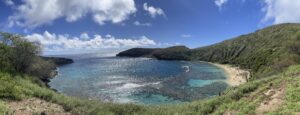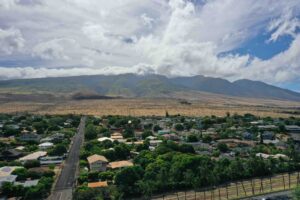By Kimberly Burnett and Christopher Wada
UHERO’s Project Environment will be leading the economic analysis for a new National Science Foundation project addressing critical gaps in the understanding of Hawaii’s fresh water supply that limit decision making, planning and crisis responses. ‘Ike Wai (from the Hawaiian ‘ike, (knowledge), and wai, (water) spans geophysics, microbiology, cyberinfrastructure, data modeling, indigenous knowledge and economics and connects university scientists to state and federal agencies and community groups.
Diversity in volcano age, eruption types, structural history, and hydrological features generate a complex subsurface water system that provides most of Hawaii’s potable water supply. While many hydrological studies have been carried out in Hawaii, relatively little is known about the exact structure of the many groundwater (GW) aquifers that are present throughout the state. Existing models are able to approximate the structure, but the accuracy of predicted water flows and sustainable yields for Hawaiian watersheds is limited by the availability of existing data, which is used to calibrate the models. Accordingly, ʻIke Wai will use new technology to measure the volume and interconnectivity of aquifers within Hawaiian volcanoes. Geophysical imaging will provide new high-resolution 3D maps of geologic structures. Real-time monitoring will support analysis of aquifer volume and hydraulic conductivity estimations. Flow and aquifer connectivity measurements will integrate three approaches: submarine GW Discharge (SGD) analysis, geochemistry and the innovative use of microbial diversity as a GW tracer.
Data and outputs from ʻIke Wai will provide decision-making tools to address challenges related to water availability and sustainability. Recent research on the West Hawaii coast has shown that we do not fully understand the size, flow rates, and boundaries of our groundwater aquifers. Without a clear understanding of how much water is available, we cannot properly plan future water use and management. There is currently significant debate over whether there is enough water to meet planned development while ensuring the biological and ecological integrity of surrounding nearshore habitats. ʻIke Wai will provide crucial geophysical data that will allow us to assess how much water is available to support both humans and nearshore environments.
Once we know the size, volume, and flow rates of groundwater aquifers, we can match these water supply estimates with current and projected demands for water. These demands come in the form of human demand — for domestic, commercial, agricultural, and municipal use — as well as biological and ecological demands — for example the dependency of nearshore organisms on freshwater discharge to the ocean, which is driven by the size and flow rate of up-gradient aquifers. The research from ʻIke Wai will help resource managers, policy makers, and the general public understand how scarce groundwater is in these areas, and how these resources should be priced, pumped, and managed to achieve the objectives that will be determined as part of our stakeholder engagement process. These objectives could be related to development, ecological integrity, and/or cultural integrity — we won’t know exactly what we are aiming for until we engage the stakeholders in our research.
The ʻIke Wai Initiative will give us a better sense of where the water is, how much is there, how much and where we can pump for what uses, and how we should best manage (price, restrict, require permits for, etc.) this resource. Stakeholder engagement and policy evaluation are also key components of the project, so we believe that the research results will not only be transformative from a scientific perspective but also useful for planning and management. Providing user friendly access to data and research results is an important objective of the project. Software engineers will work collaboratively with other members of the research team and stakeholders to create web and mobile applications for data dissemination, interaction and visualization.
For more information on the project, visit EPSCoR.





